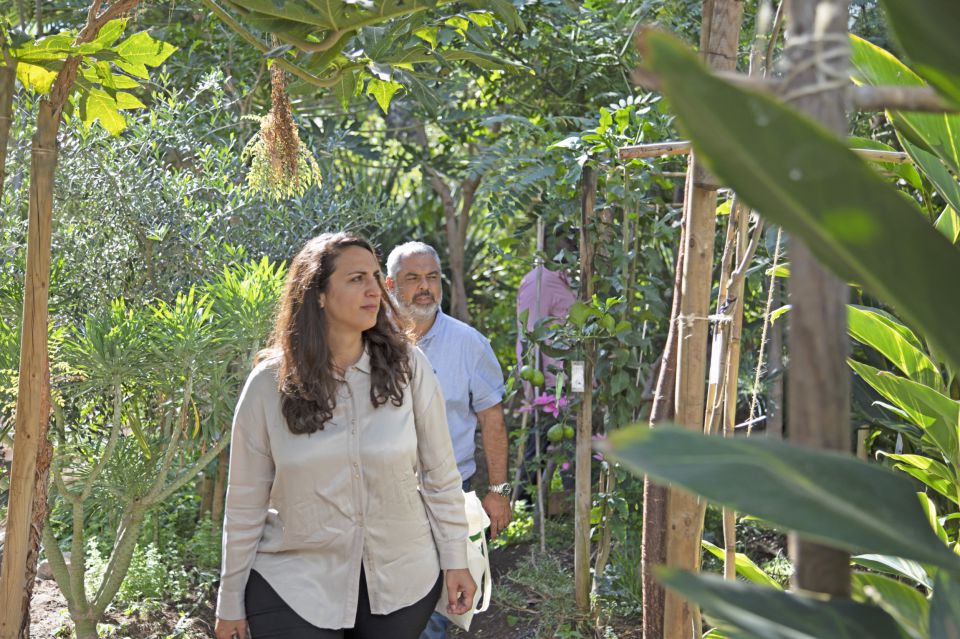This morning, November 30th, the Adeje department of ecological transition, under Manual Luis Méndez Martín, presented the Adeje Parque Central (Central Park) to the press, a productive forest producing edible goods, of over 30,000 metres (at the moment 16,000m2 are planted), with over 25,000 plant species, fruits, ornamental plants, aromatic and medicinal plants and edibles. Part of the work of the park is also to help the council in reducing the area’s carbon footprint.
The III TREEMAC mission (Interreg MAC 2014-2020) is being organised by Adeje council in conjunction with GESPLAN and FORESTA, ending this Friday. This morning’s presentation also saw contributions from Sergio Armas from the Fundación Foresta, Juan Pestano from Tragsatec, and Juan Hernandez, the park’s designer.
The mission is about exchange of ideas and experiences in the realm of environmental conservation and protection. There were talks organised on the dangers of invasive species, TREEMAC presentations from different regions, with the Adeje Parque Central introduced as one of the local initiatives within the mission.
Councillor Méndez Martin said that “we are delighted to present the Parque Central project, a productive forest, whose aim is to offer the public an alternative green space within the town, and one that is consuming carbon, reducing emissions that are damaging the ozone layer, a pioneer project in the islands, and an example for the future improvement of conservation”.
He said the park would be a space where the people of Adeje “could enjoy events in the open air, workshops, practical activities which focussed on environmental education, training activities, etc.” He added that the mission experience was particularly enriching.
The Parque Central
As well as a botanical garden, with a 290 cubic metre lake, trees, wetlands, the new park offers an open-air classroom where people can also learn first-hand about different agro-forest techniques, a productive system that integrates flora and fauna in the same shared space.
A productive forest is a multi-diverse ecosystem forest that is designed to imitate a natural forest, combining different kinds of plants who are sharing the space available to them. The variety of plants allows for the production of different food produce too.
These kinds of parks also contribute directly to carbon emission reductions, work to prevent soil erosion and improve underground waters. It is reckoned that a hectare of this park absorbs 18 tons of C02, produces 12 tons of oxygen and creates vast amounts of organic material, as well as being natural barriers against wind, rain, and noise. The park, for Adeje council, is also an important element in the move to a triple sustainability policy, environmental, social and economic.
1.500 m2 of the park is dedicated to cultivation too. The park is now producing tons of fruit and vegetables, a lot of which goes directly to the Adeje Food Bank.
TREEMAC
The TREEMAC project is based on the creation of a European-African network of natural spaces to promote increased knowledge and development of biodiversity and ecosystems. The project is about increasing public awareness about the conservation and protection of the environment through the creation of green infrastructures and the improvement of ecological forestry development, economically and socially sustainable, structured in three blocks – awareness, participation, and conservation.
Visiting the park
The public will be able to visit the park from 2023, and these will be free guided visits, and must be booked in advance. The guides are important as the park continues to evolve and some of the works cease during visits for the safety of the public.
People interested in guided visits from next year can book in advance by calling 822.247.901.
